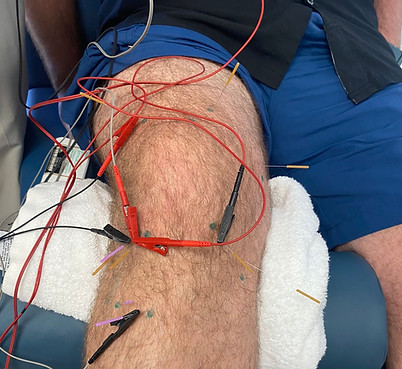
Dry Needling
Dry needling involves the use of a small, mono-filament needle to treat muscle tension, movement impairments, and both radiating and local pain. "DRY" needling earns it's name because there is no medication used during the treatment.

Dry needling works from the physiologic stance of restoring normalized homeostasis within the muscle. Trigger points are defined by areas of taut bands within the muscle fiber that are linked to both localized and referral pain. Trigger points have an acidic environment (pH <7), increased concentrations of lactic acid, substance P acetylcholinesterase, and decreased adenosine and oxygen. Physiologically, the neuromuscular junction is then stimulated by increased acetylcholine which causes continued unwanted contractions of the muscle fibers. These acidic environments then cause an array of different dysfunctions to patients.
Dry needling works by attempting to isolate these trigger points and penetrating them to create a "twitch response" which has been linked to improving all the physiologic conditions described above. Often, electrical stimulation is used in conjunction with the needles to further help reduce pain and normalize intramuscular conditions.
Research to support the effects of dry needling can be found with - Headaches, migraines, tendinitis/tendonopathy, arthritic pain, plantar fasciitis, sciatica, neck pain, low back pain, hip pain, knee pain, fibromyalgia, and even anxiety.

